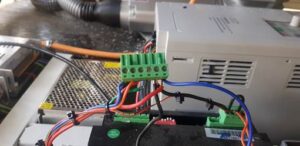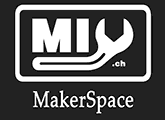Advantages of 3D Printing
Advantages of 3D Printing
Many hobbyists and professionals have adopted 3D printing as a method of prototyping or even as a full-fledged manufacturing technique. With increased media coverage the concept of 3D printing has become more popular, resulting in many new companies and other organizations (and individuals) that create and support 3D printers to rise. Due to this ever-increasing popularity, we could see 3D printing has become one of the commonplaces, everyday technologies of the 21st century. To understand why 3D printing has become so popular and the advantages of 3D printing and how it could revolutionize multiple industries all you need to do is look at the various benefits provided by these machines.
So, what are the advantages of 3D printing?
First off, 3D printing allows items to be made cheaply. Compared to traditional manufacturing methods, users can save upwards of 70% of costs when making items. The exact savings will vary depending on what you are making and what type of 3D printer you are using but even saving a small portion of your budget is still a very positive feature. The lower costs can be attributed to cheaper raw materials and reduced shipping costs for those materials. Other advantages of 3D printing are that while at-home hobbyists’ advantages of 3D printing advantages of 3D printing do not always allow users to save money compared to purchasing an item the technology is still growing and that is likely to change.

Other advantages of 3D printing are that 3D printing is very fast and easy to use. Comparing the speed of a 3D printer to older manufacturing methods can be like comparing a car to a horse. Oftentimes a 3D printer can do in hours what other manufacturing techniques would take days or weeks to accomplish. This, combined with the provided cost savings also opens the way for on-demand manufacturing. If you can create new stock as fast as it is ordered, you no longer need to rent out a warehouse to store massive amounts of inventory. Although this tactic may not work very well for brick and mortar stores it can be very effective for online businesses.
Traditional manufacturing tends to produce a lot of waste because it is subtractive. Subtractive manufacturing techniques take a piece of raw material and remove parts of it to get the desired item. 3D printers use additive techniques; objects are built by adding more material until you get the item you want. This results in significantly less waste production. Because you need fewer raw materials to create your product this also contributes to cost savings.
Producing less waste is one of many features that could make 3D printing technology sustainable in the long run. In addition to that feature, advantages of 3D printing 3D printers are multi-purpose; they can be used to build a very wide variety of items. Additionally, the use of digital files and the similarity of each printer means that almost all items can be printed on almost any machine. Even if 3D printers alone are unable to fulfil desired sustainability standards, they may still be able to get the job done when combined with other manufacturing techniques and technologies.
More information 3D printing
3D printers are also easily accessible to hobbyists which are and other members of the public. Many manufacturing technologies are not available to the average person and, even if they were, require specialized training regardless. 3D printing does not have that limitation and at some point, in the future every home could be outfitted with a machine that can make whatever you need whenever you need it. While a machine like this would severely damage consumerism as it is now and would have to get over those hurdles, the technology could still theoretically exist in less time than you may think. One of the best advantages of 3D printing.

